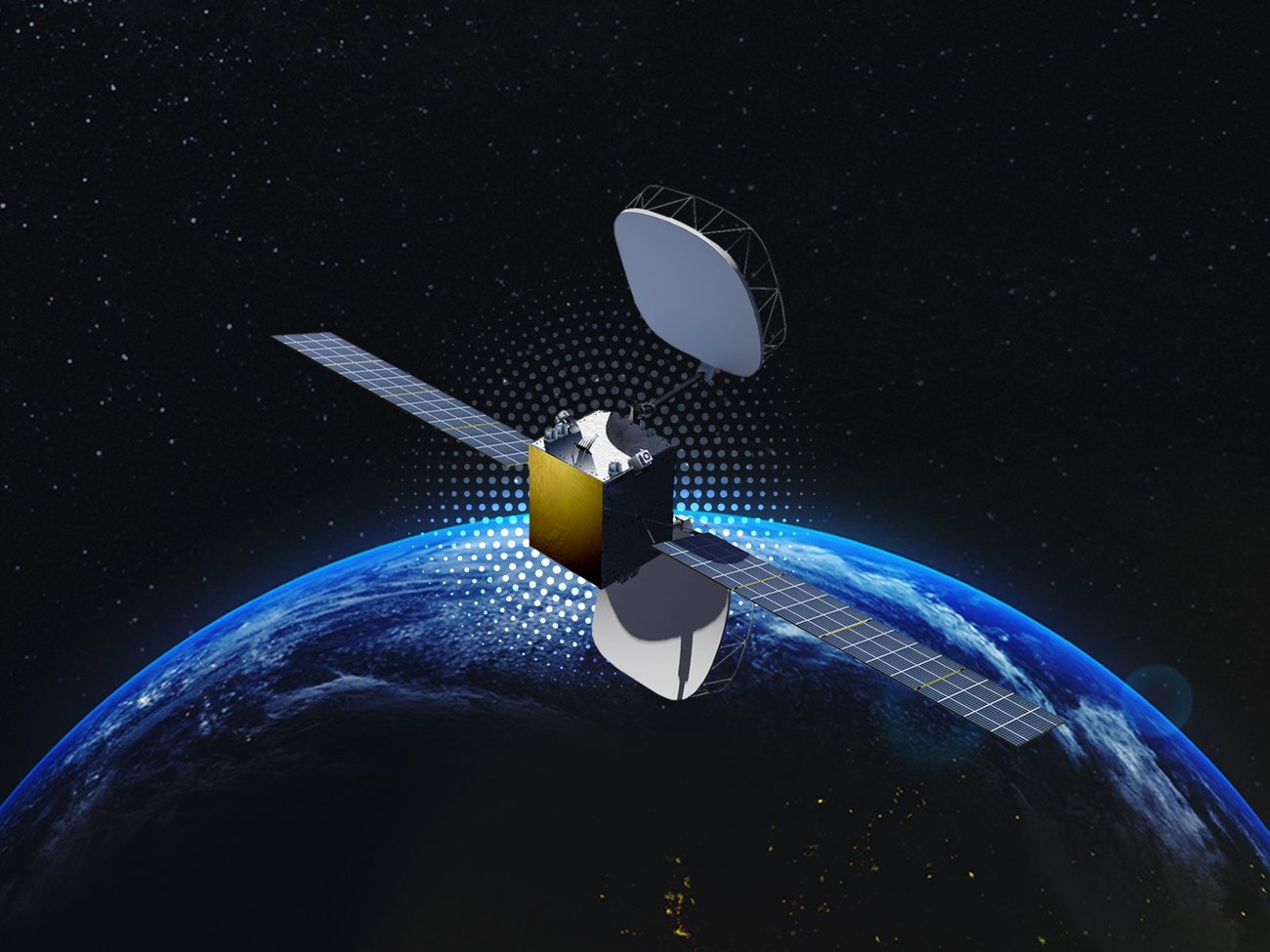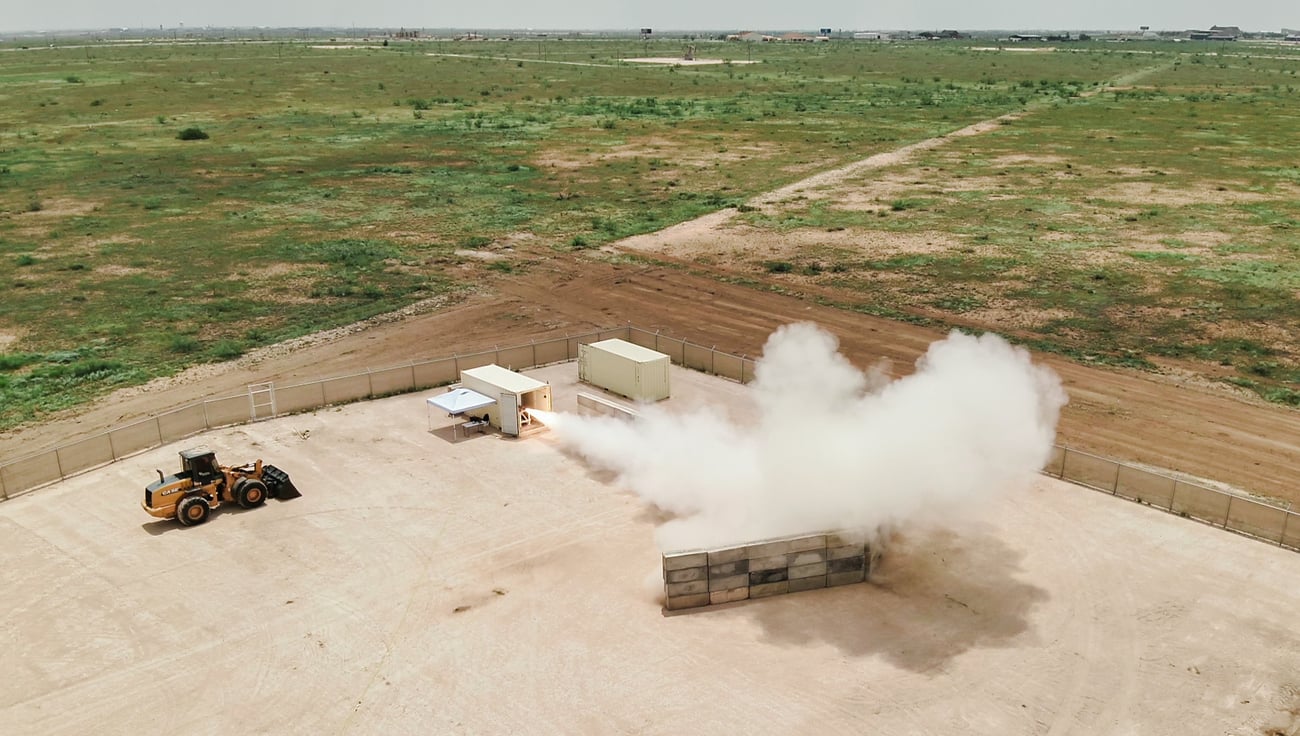| 02/04/2025 | | National security insights for space professionals. Delivered Tuesdays. | | Welcome to this week's edition of SpaceNews Military, your source for the latest developments at the intersection of space and national security. In this issue, we cover:
- How the private sector is reshaping the future of space - Top DoD contractors poised for gains from America's Iron Dome - Space Rapid Capabilities Office selects startups for new accelerator
If this newsletter was forwarded to you, sign up for free here
|  | | | Space & defense brief 🛰️
|  | |
Trump's missile shield plan fuels industry optimism
President Donald Trump's executive order directing the Pentagon to build a "next-generation missile defense shield" has defense contractors eyeing major business opportunities. The initiative, called the Iron Dome for America, aims to bolster homeland defenses against ballistic, hypersonic, and cruise missile threats using a multi-layered system, including space-based sensors and potentially interceptors in orbit.
What's happening: -
Executives from Lockheed Martin, Northrop Grumman, and L3Harris told analysts last week that their companies are primed to support the administration's ambitious missile defense push. -
Northrop Grumman CEO Kathy Warden: "We welcome the urgency that the Trump administration is placing on protecting the homeland from escalating global missile threats." The company is already a key player in satellite-based missile detection and hypersonic interceptors. -
L3Harris CEO Christopher Kubasik said the firm is heavily invested in space-based missile defense, producing missile-tracking satellites for the Space Development Agency's Tracking Layer program. -
Lockheed Martin CEO James Taiclet highlighted Lockheed's work on the "next-generation interceptor" and expressed interest in expanding into hypersonic missile interceptors using AI and high-speed data networks. What's next:
While contractors are optimistic, space-based interceptors remain highly controversial. Unlike Lockheed's NGI, which is ground-based, space-based missile defenses could be seen as an escalation risk, with concerns over miscalculation and international backlash.
| | | | | | CSIS analysts make the case for space-based missile defense
Analysts from the Center for Strategic and International Studies argue that it's time to take missile defense to space — despite the long-heard criticisms that such an effort is too costly, technologically unfeasible and destabilizing.
CSIS senior fellows Clayton Swope and Tom Karako push back on these concerns in their latest SpaceNews op-ed, contending that while space-based missile defense would present significant challenges, it is an option worth seriously considering as the Pentagon recalibrates its approach to warfare in space. -
"Critics of the administration's intentions resurrect arguments first made in the 1980s," they write, referring to concerns raised during President Ronald Reagan's Strategic Defense Initiative. That program — ultimately scrapped in 1993 — was hindered by Cold War-era constraints, including high launch costs and technological limitations. But today's geopolitical and technological realities are different. -
China and Russia are developing space-based capabilities at breakneck speed, and rogue states like Iran and North Korea continue to refine their missile arsenals. Meanwhile, access to space is cheaper than ever. The cost of launching a kilogram into low Earth orbit has plummeted from $30,000 in 1989 to roughly $1,500 today—on its way to $500. Companies like SpaceX are now producing satellites at an industrial scale, launching new constellations in a matter of days. As the U.S. military looks to harden its defenses in space, Swope and Karako stress that a serious discussion on space-based missile defense is long overdue, but the question is whether decision-makers will be willing to push past historical baggage to reimagine deterrence for the 21st century.
|  | |
The space race goes commercial
CSIS' Swope, in a policy brief published Jan. 30, says the U.S. must urgently integrate commercial space capabilities into national security strategy to maintain its competitive edge against adversaries like China and Russia.
The report "Bringing the Private Sector to Space," discusses the challenges and opportunities in integrating commercial space solutions into U.S. military operations.
Key highlights: -
Despite recognizing the value of commercial space, the Department of Defense still struggles with acquisition bottlenecks, outdated procurement models, and a culture resistant to change. While SpaceX, Amazon's Kuiper, and other industry players roll out next-generation capabilities, the Pentagon is often stuck in bureaucratic slow lanes. -
To stay ahead, the Pentagon needs to streamline acquisitions, embrace flexible contracting, and deepen public-private partnerships. Without these reforms, the U.S. risks falling behind in the next era of space dominance. -
The Department of Defense recognizes the potential of commercial space solutions but faces challenges in fully integrating them into military operations. While progress has been made in creating procurement frameworks, there are still significant hurdles in validating commercial products and services against operational requirements and operationalizing them within the existing military structure. Among the recommendations: -
Establish a process to rapidly validate commercial products and services against military requirements -
Develop processes for operationalizing commercial space services. -
Include commercial space solutions in readiness, sustainment, and force planning activities. | | | | Airbus takes aim at SpaceX
Airbus has hired investment banker to explore the creation of a European space and satellite powerhouse, a move aimed squarely at challenging Elon Musk's SpaceX, Bloomberg reported Monday.
The potential venture would bring together Airbus' space assets with those of French defense firm Thales and Italy's Leonardo, both of which cooperate on satellite and telecommunications programs. The effort underscores Europe's growing push to establish a homegrown alternative to American dominance in commercial spaceflight and satellite deployment.
European leaders have long sought to cultivate a competitive space ecosystem but have struggled with fragmented national interests and funding constraints.
| | | In other news 🚀 | | The U.S. Space Force's Space Rapid Capabilities Office (Space RCO) selected 10 companies to participate in its inaugural Prime Fusion Pilot Accelerator Program, an initiative aimed at fast-tracking technologies to protect military satellites from orbital threats.
The accelerator will focus on satellite defense technologies, including onboard satellite sensors, anomaly detection software, and ground-based tracking systems to monitor and report potential threats such as space debris and adversarial activity.
| | |  | |
Castelion, a startup led by former SpaceX executives, raised $100 million to accelerate development of lower-cost hypersonic missiles, marking Silicon Valley's latest push into the defense sector traditionally dominated by established contractors.
The El Segundo-based company, founded in November 2022, aims to disrupt the hypersonic weapons market by applying commercial space industry practices to missile manufacturing. Hypersonic missiles, which travel at over five times the speed of sound and can maneuver mid-flight, have become a key priority for the Pentagon.
| | | | York Space Systems unveiled its largest satellite to date, the M-Class platform for payloads as large as 1,000 kilograms.
Denver-based York developed the bigger platform in response to customer demand "for more power and capability," Michael Lajczok, said chief technology officer. Both government and commercial customers are demanding larger platforms offering additional power for Earth-observation and communications missions, he said.
| | | | Thanks for reading! Please send comments, suggestions and tips to serwin@spacenews.com | | | | | |

No comments:
Post a Comment